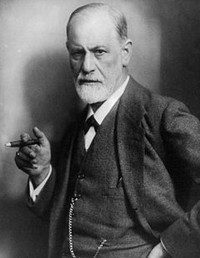
Sigmund Freud on the nature of artistic creativity
Contents
 When a person cannot do something in life, he does it in a dream. A dream is the personification of our unfulfilled desires. The artist looks like a sleeping man. Only he fulfills his desires in reality, recreating them in his works. When Freud wrote about the nature of artistic creativity, he paid special attention to the study of the personality of the artist.
When a person cannot do something in life, he does it in a dream. A dream is the personification of our unfulfilled desires. The artist looks like a sleeping man. Only he fulfills his desires in reality, recreating them in his works. When Freud wrote about the nature of artistic creativity, he paid special attention to the study of the personality of the artist.
Who is an artist?
The scientist compared artists with neurasthenics and children. The artist, just like the neurotic, tries to escape reality into his own world: the world of dreams and desires.
The artist there is a maestro. He is a master who creates his masterpieces. It is in his works that his hidden unrealized dreams lie. Unlike many adults, the artist is not ashamed to show them off.
Speaking about creativity, Freud paid special attention to literature. He believed that the focus of the writer’s attention was himself, or rather his self-portrait in a literary work. And that is why the main character is given more time than everyone else.
Why did Freud, in his thoughts on artistic creativity, argue that the artist is like a child? The answer is simple: emotional experiences awaken memories from childhood in the author. It is this period that is the primary source of current desires, which are personified in the works.
The benefits of artistic creativity

Sigmund Freud (1856-1939)
The author in his works satisfies his childhood desires, which could not be fulfilled in real life. Art is a great way of psychotherapy for an artist. Many authors, such as Alexander Solzhenitsyn or Gogol, argued that it was art that allowed them to get rid of depression and bad desires.
Art is useful not only for the authors, but also for the public. Watching pictures and films, listening to music, and reading new literary works – these actions reduce psychological stress and help relieve emotions.
There is even such a method of psychotherapy – bibliotherapy. This is rather a preparatory stage, during which the patient reads books selected based on his problem.
Compensatory function of art
What does an author get when his work is popular? Money, love and fame are exactly what he wanted. What does a person get who delves into any work? First of all, a feeling of pleasure. He forgets about his problems and difficulties for a while. The person is immersed in light anesthesia. Throughout his existence, he can live thousands of lives: the lives of his favorite literary heroes.
Art and sublimation
Sublimation is the redirection of sexual energy into a creative channel. This phenomenon is well known to most people. Remember how easy it is to write poems, songs or paintings when we are in love? It doesn’t matter whether it’s happy love or not.
Another example of sublimation can be found in the life of Pushkin. Before his wedding to Natalya Goncharova, he was forced to spend 3 months locked up due to cholera quarantines. He had to redirect his libidinal energy to creativity. It was during this period of time that “Eugene Onegin” was completed, “Little Tragedies” and “Belkin’s Tales” were written.





